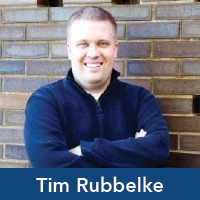While listening to the philosophy session “A Philosopher’s Look at the Belmont Principles (aka ‘Chicken Soup for the HRPP Professional’s Soul’)” at the 2021 Advancing Ethical Research Conference (AER21), panelist Robert Hood, PhD, Director of Accreditation and Global Outreach at AAHRPP, made an interesting point that at a basic level, HRPP committees—and, I would add, conflict of interest (COI), IACUC, and other research oversight committees—participate in a form of reasoning known as “casuistry.” Put simply, casuistry is a form of moral thinking that uses paradigm cases to derive the preferred ethical outcomes in a given situation. When most people think of casuistry, the biggest example they might think of is legal reasoning. While that may the most prominent, bioethics has had a long history of using this approach as well.
For research oversight committees, there is a certain appeal to using casuistry as a method, which is why I think we often end up there, even if we start from a more abstract point like the Belmont principles. Casuistry is an intuitive, somewhat concrete way—at least as far as ethics goes—of thinking about problems. When it comes to philosophical instruction (and often limited time to engage in abstract thinking for its own sake), casuistry can provide a nice nexus point between the abstract principles and policies and the practical decisions being made.
Having said that, while casuistry is the de facto method of decision making, in some respects we do operate without concrete acknowledgement that this is the case. Instead, I would propose embracing the use of these tools, specifically in two manners.
Firstly, we should identify the paradigmatic cases and use them as a training tool for new members. To be clear, I don’t mean the obvious trainwreck cases, which is how we apply this tool now. Every oversight group has at least one of these cases as a training tool: Tuskegee for HRPPs, Gelsinger for COI, the “Unnecessary Fuss” videos that spawned the changes to the law formalizing IACUC review. These cases provide examples of what not to do, but very little in the way of positive guidance.
In addition to these, we should provide members paradigm cases with positive outcomes (i.e., complicated but well conducted clinical trials, managed conflicts, etc.) from historical files, with explanations on the similarities and differences between the cases that lead to the various determinations. Certainly, we’d expect our files to be mostly filled with cases that had positive outcomes, but when choosing paradigm cases, the focus would be not just on those with these positive outcomes, but also cases that best highlight the differences that lead to varying determinations.
A second use of casuistry for our committees is using forward looking hypothetical cases. This was the format of the COI-focused session at AER21, “Data Risks—Strategies for Maintaining Research Integrity via Conflict of Interest (COI) Review.” As I was listening, I found myself using casuistry to think about how our committee might apply previous precedent to these new cases. How were they similar, or different from our real cases? What new ground would the committee need to forge? At times you may know there are issues bubbling up that will challenge the committee in a new way, but capturing these issues in a case (even a hypothetical one) renders them sharper and more pronounced than thinking about them as abstract concerns.
These cases need not be pure hypothetical either. In fact, it may be more useful if they were derived from real historical cases at the institution with new complexities or complications. As institutions continue to promote both entrepreneurship and licensing university owned IP for commercialization, it’s easy to see what situations may arise in the near future.
Thinking of a committee’s approach—whether it be a HRPP, COI, or IACUC—as a one that is fundamentally casuist at its core provides a stable framework for how our committees function in practice (even if it’s not always acknowledged). We should embrace this approach, use it as part of our training for new members, and use it to help prepare our committees for new situations.
The 2022 PRIM&R Annual Conference (PRIMR22) will bring the entire research community together and serve as a forum for discussing common themes that span the research enterprise. Attendees will have the opportunity to network and address challenges facing research programs, their administrators, and leaders. Attend the December 8 workshop, “Crash Course in Ethical Frameworks and How to Use Them,” to practice ethical decision-making strategies on case studies.
PRIMR22 will take place online December 12-15, with in-depth workshops on December 6 and December 8.
 Tim Rubbelke, PhD, is the Senior Research Compliance Specialist in the Research Conflicts of Interest program at Washington University in St. Louis. He assists the Conflict of Interest Review Committee in the assessment and management of complex cases of financial conflicts of interest, including those related to startups commercializing university-owned IP. Tim has a PhD in Health Care Ethics from St. Louis University, focusing on both human subjects and animal research ethics.
Tim Rubbelke, PhD, is the Senior Research Compliance Specialist in the Research Conflicts of Interest program at Washington University in St. Louis. He assists the Conflict of Interest Review Committee in the assessment and management of complex cases of financial conflicts of interest, including those related to startups commercializing university-owned IP. Tim has a PhD in Health Care Ethics from St. Louis University, focusing on both human subjects and animal research ethics.


No comments! Be the first commenter?